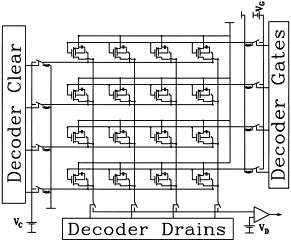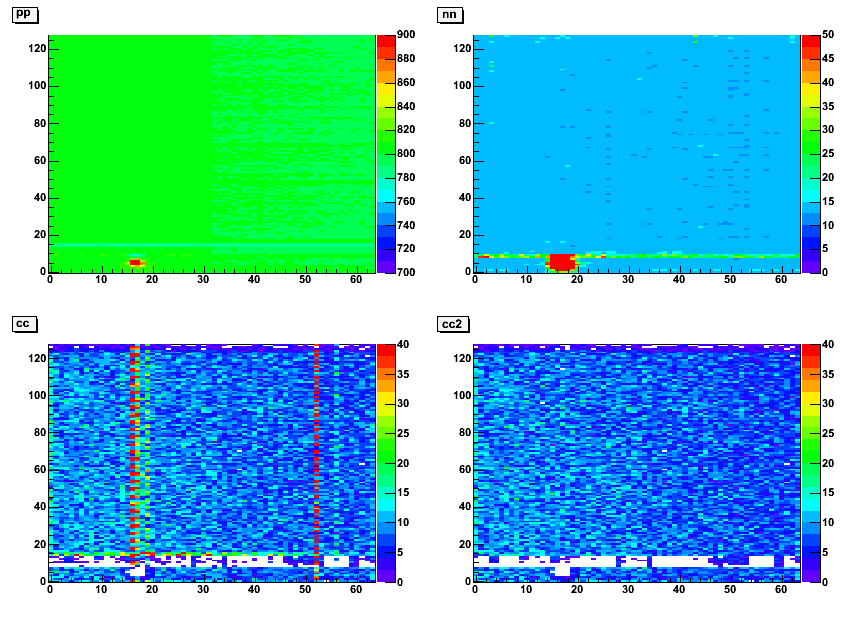|
 Puzzle of the month. Just for insiders: try understanding this feature!! Puzzle of the month. Just for insiders: try understanding this feature!!
This month's puzzle was found when analyzing TB2008 data. When running over the data to calculate pedestals and common mode noise the PXD5 wafers show very uniform features. Discrete features are rare. A good example is module 0 (hybrid 7, ) in the 2008 TB: the two uppermost figures (labelled as pp and nn) represent the pedestal and noise value for the 128x64 pixels in this sensor. Apart from the circle and the row that clearly stand out, all pixels have approximately the same response.

Pedestals and noise are calculated using a robust algorithm that discards pixel with large signal (> 150 counts above the initial pedestal value). After pedestal subtraction and common mode noise correction (again signal pixels are discarded) clusters are reconstructed around pixels with signal exceeding the pedestal value by 7 times the noise. The distribution of seeds is shown in the third histogram (labelled cc). All of a sudden, a number of "completely normal" columns are found to have a much larger probability to generate a seed. The same "feature" is found in all modules in the 2008 TB. What's wrong with these columns???
Some more clues:
A closer look reveals that the excess activity in these columns is limited to event numbers that are multiples of 16. If we plot the distribution of seed pixels excluding events with numbers 0,16,32,48,... we obtain the fourth plot (labelled cc2). The hyperactive columns have disappeared. Not only that, these columns are behaving like perfectly normal columns for 15 events out of every 16. Why 16? Are events shipped from the hybrid in packets of 16?
The ADC value of the hyperactive columns in events that are multiples of 16 is remarkably stable. Column 3 of module 4 returns 1040 ADC counts for all these events, while column 23 returns 579 ADC counts. As if we were just reading back the same memory position all the time.
Finally, it seems to me I have observed this behaviour also in our laser test setup (with a PXD4 wafer and the Windows DAQ).
|